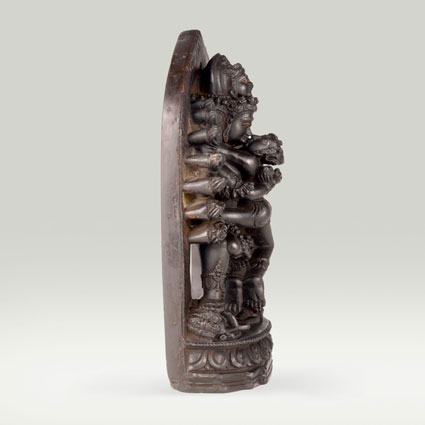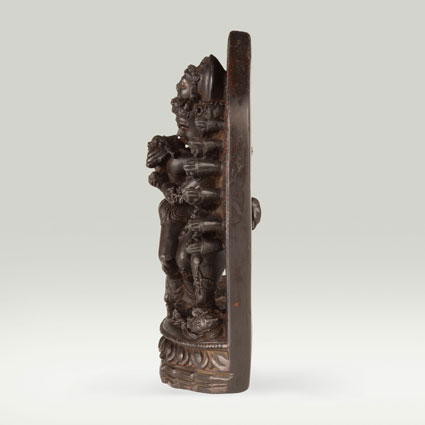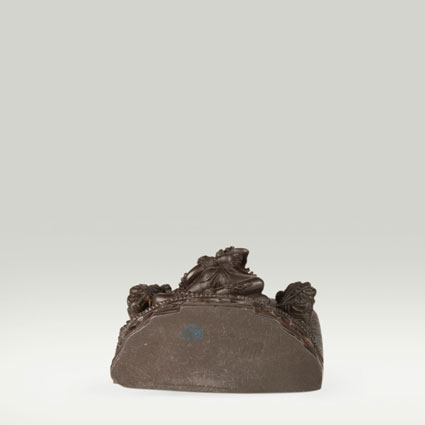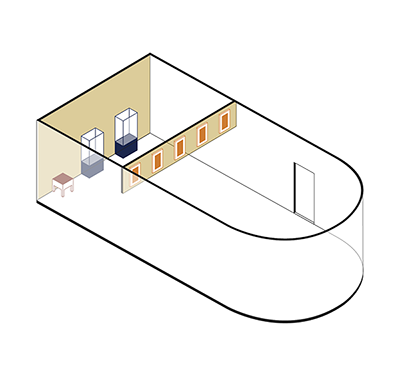Add to favorites
ABS 229
Code: ABS 229
Country: India (north-east)
Style: Late Pala Style
Date: 1100 - 1200
Dimensions in cm WxHxD: 7.9 x 13.2 x 3.4
Materials: Dark grey stone with traces of paint
Kapaladhara Hevajra embracing Nairatmya
Hevajra is one of the foremost meditational deities of Tibetan Buddhism, especially for the Kagyü and Sakya schools. He appears under his Kapaladhara aspect, “holder of skull cups.” Tall and slender with a dark skin, he has eight faces and sixteen arms holding skull cups, his first pair embracing his consort. With four legs, two in the walking stance and two in the dancing posture, he stands on a lotus seat, trampling on the four demons. Facing him is Nairatmya, standing in the dancing posture, embracing the deity.
This stone sculpture from North-eastern India testify of the influence of Pala art on the Tibetan aesthetic. The traces of cold gilding on the sculpture indicates the statue was worshipped in Tibet. Small stone sculptures participated to the dissemination of the Indian Pala influence throughout Asia until its disappearance during the 12th century.
Hevajra is one of the foremost meditational deities of Tibetan Buddhism, especially for the Kagyü and Sakya schools. He appears under his Kapaladhara aspect, “holder of skull cups.” Tall and slender with a dark skin, he has eight faces and sixteen arms holding skull cups, his first pair embracing his consort. With four legs, two in the walking stance and two in the dancing posture, he stands on a lotus seat, trampling on the four demons. Facing him is Nairatmya, standing in the dancing posture, embracing the deity.
This stone sculpture from North-eastern India testify of the influence of Pala art on the Tibetan aesthetic. The traces of cold gilding on the sculpture indicates the statue was worshipped in Tibet. Small stone sculptures participated to the dissemination of the Indian Pala influence throughout Asia until its disappearance during the 12th century.







